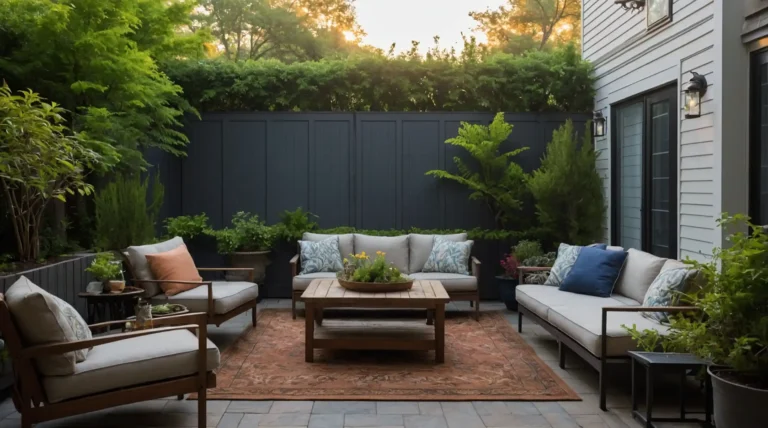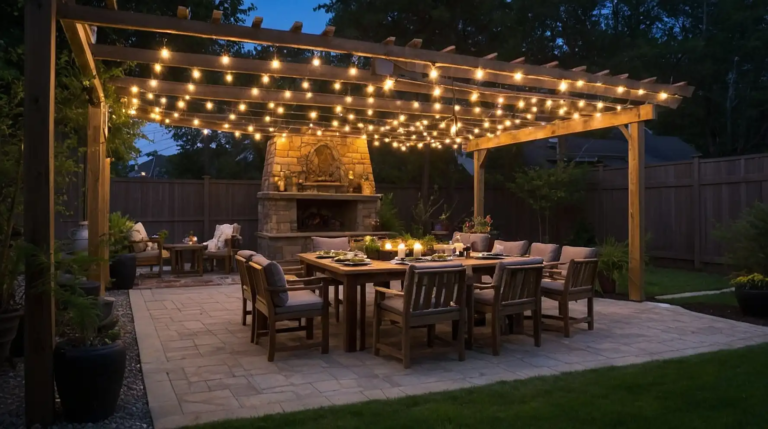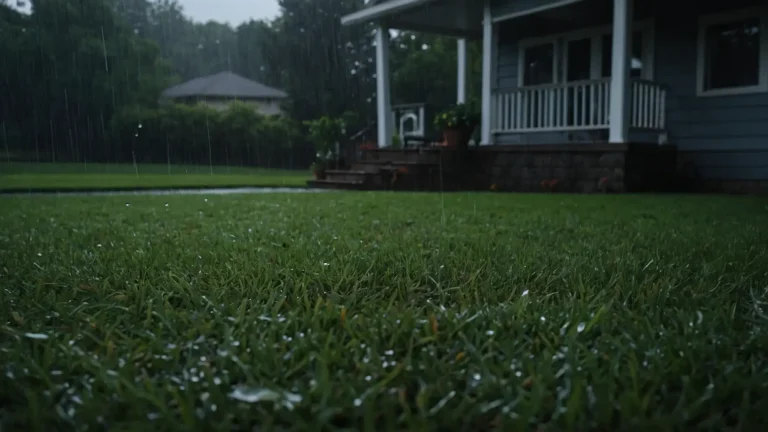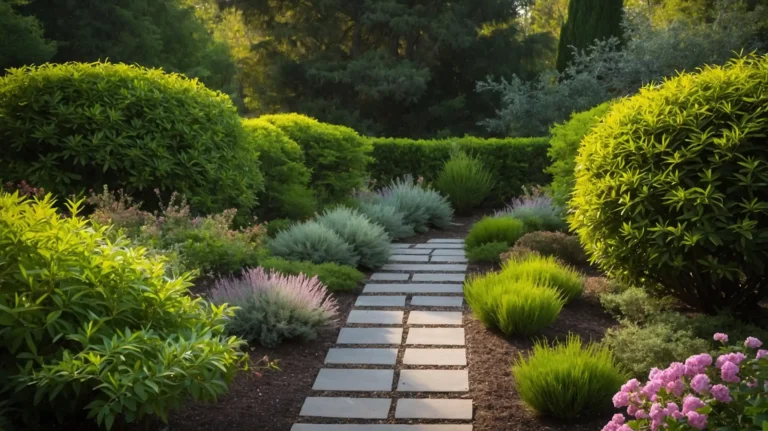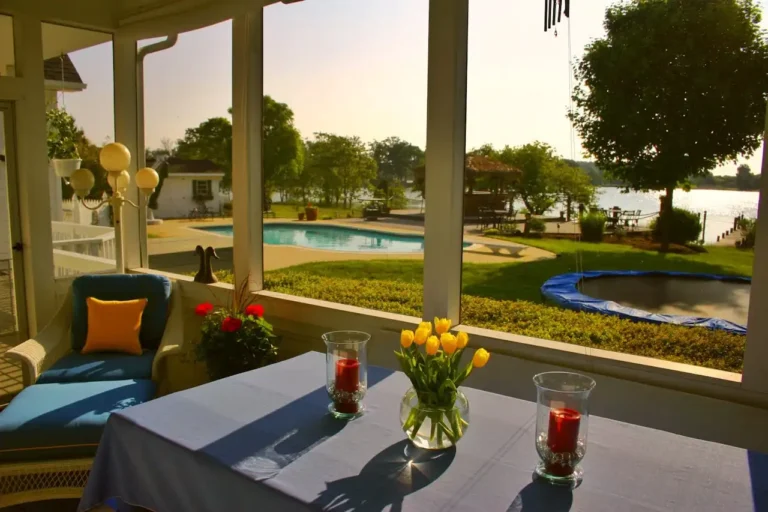Vertical Garden Ideas for Tiny Backyards or Balconies
Your tiny outdoor space doesn’t have to limit your gardening dreams. You’ll discover how to grow more plants in less space while creating stunning living artwork.
When horizontal growing room disappears, smart gardeners look up to create lush, productive vertical gardens that maximize every square inch.
These innovative vertical solutions transform blank walls, railings, and unused spaces into thriving green sanctuaries.
Prepare to revolutionize your small space gardening using these creative vertical techniques that prove size limitations can’t stop a green thumb.
Wall-Mounted Planter Systems
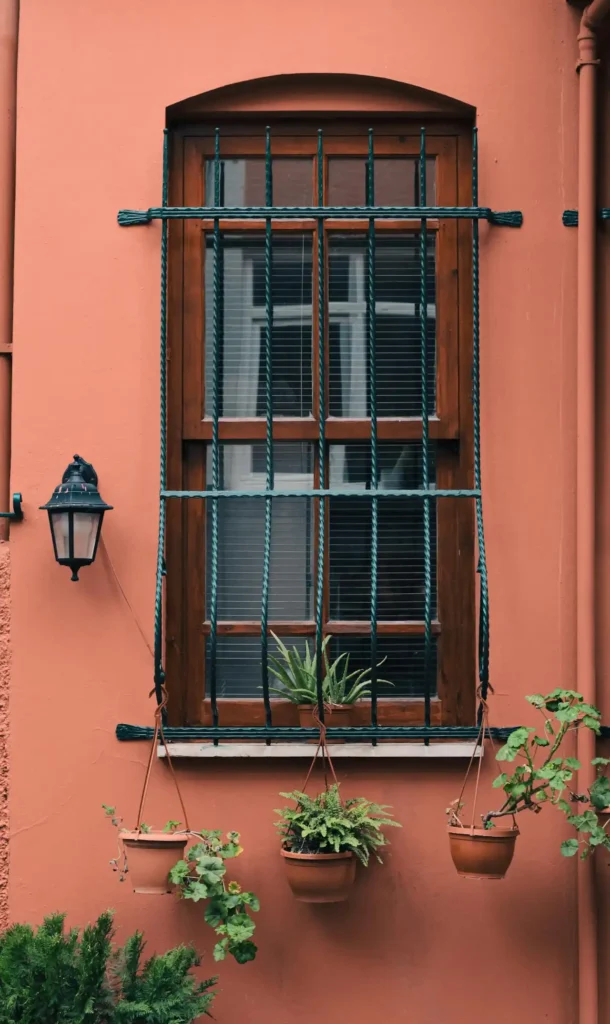
Transform any vertical surface into a productive garden using wall-mounted systems that create maximum growing space without consuming precious floor area.
Install modular planter boxes that attach directly to walls, fences, or balcony railings using brackets or mounting hardware.
These systems allow you to create custom arrangements that fit your specific space dimensions while providing adequate growing depth for various plants.
Choose materials that complement your outdoor aesthetic while providing durability against weather exposure.
Cedar, powder-coated metal, or weather-resistant resin options maintain their appearance while supporting healthy plant growth through proper drainage and root space.
Position wall-mounted planters to receive appropriate sunlight for your chosen plants.
Most vegetables and flowers require 6-8 hours of direct sunlight, while herbs and leafy greens can thrive with 4-6 hours of morning or filtered light.
Create visual interest by varying planter sizes and heights across your wall space. Consider irrigation needs when planning wall-mounted systems.
Mix rectangular boxes with circular or triangular options to break up monotonous patterns while maximizing your growing capacity within the available area.
Install drip irrigation lines, self-watering reservoirs, or plan manual watering access that reaches all planters without creating water damage to walls or neighboring areas.
Trellis and Climbing Plant Solutions
Maximize vertical growing space using trellises that support climbing plants while adding architectural interest to your tiny outdoor area.
Build simple trellises using lattice panels, wire mesh, or wooden stakes that provide support structures for vining plants.
These frameworks require minimal floor space while offering substantial growing area for beans, peas, cucumbers, or flowering vines.
Install permanent trellis systems against walls or fences using sturdy mounting hardware that withstands wind loads and plant weight as they mature.
Proper installation prevents damage to structures while ensuring long-term stability for your climbing garden.
Choose fast-growing climbing plants that provide quick coverage and abundant harvests in small spaces.
Pole beans, sugar snap peas, cherry tomatoes, and morning glories produce impressive yields while utilizing vertical space efficiently.
Create living privacy screens using trellises covered with dense-growing vines that block unwanted views while providing functional garden space.
This dual-purpose approach maximizes benefits from your limited square footage. Train plants properly using soft ties or clips that guide growth without damaging stems.
Regular training ensures plants utilize trellis space efficiently while maintaining healthy growth patterns and preventing overcrowding.
Hanging Garden Arrangements
Utilize overhead space and create dramatic visual impact with hanging gardens that add growing area without consuming any floor space.
Select appropriate containers for hanging gardens that provide adequate drainage while remaining lightweight enough for safe suspension.
Lightweight ceramic, plastic, or fiber planters work well for most hanging applications without creating structural concerns.
Install strong mounting points using ceiling hooks, wall brackets, or overhead structures rated for the weight of fully watered planters.
Safety considerations prevent accidents while ensuring your hanging gardens remain secure through weather changes.
Choose plants with appropriate growth habits for hanging displays. Vary plant types and colors for seasonal interest throughout the growing year.
Trailing varieties like strawberries, cherry tomatoes, or cascading flowers create beautiful displays while producing edible or ornamental rewards.
Layer hanging planters at different heights to create three-dimensional garden displays that maximize growing space while creating visually stunning arrangements.
Consider weight distribution and spacing when planning multiple hanging planters.
Proper spacing prevents overcrowding while ensuring each plant receives adequate light and air circulation for healthy growth.
Pocket Garden Systems
Create extensive growing space using fabric or plastic pocket systems that house multiple plants in compact vertical arrangements.
Install shoe organizers, specifically designed pocket planters, or custom-sewn fabric systems that hang from walls, fences, or balcony railings.
These systems accommodate numerous small plants while requiring minimal wall space.
Fill pockets with appropriate growing medium that provides drainage while retaining sufficient moisture for plant health.
Quality potting soil mixed with perlite or vermiculite creates ideal growing conditions for most pocket garden applications.
Plant herbs, leafy greens, or small flowers in individual pockets to create diverse gardens that provide variety within compact spaces.
Each pocket functions as an independent growing unit while contributing to the overall garden display.
Rotate plants seasonally to maintain continuous harvests and visual interest throughout the growing year.
Cool-season crops like lettuce and spinach can be replaced with warm-season herbs and peppers as temperatures change.
Monitor moisture levels carefully in pocket systems since individual compartments can dry out quickly.
Regular watering schedules or drip irrigation systems ensure consistent plant health across all pockets.
Repurposed Container Gardens
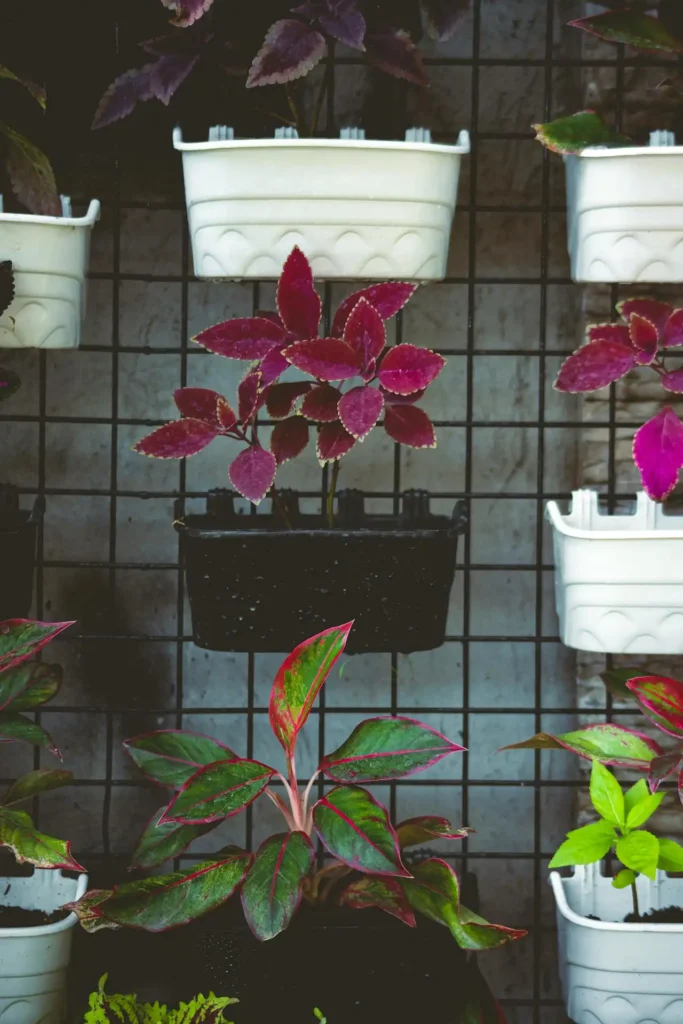
Transform everyday items into unique vertical garden components that add personality while reducing waste and gardening costs.
Convert plastic bottles, tin cans, or wooden crates into individual planters that can be mounted on walls or arranged in tower configurations.
These repurposed containers provide growing space while adding creative flair to your vertical garden design.
Prepare containers properly by adding drainage holes, cleaning thoroughly, and applying protective treatments if necessary.
Proper preparation ensures container longevity while providing healthy growing environments for your plants.
Stack containers in pyramid or tower arrangements that create dramatic vertical displays while maximizing growing capacity.
Secure stacked arrangements properly to prevent toppling while allowing easy access for maintenance and harvesting.
Paint or decorate repurposed containers to match your outdoor aesthetic while adding personal touches that reflect your style.
Creative finishing transforms mundane containers into attractive garden features that enhance your space’s overall appeal.
Consider container size relationships when planning repurposed gardens.
Larger containers at the bottom provide stability while smaller ones create visual interest without overwhelming the overall design.
Living Wall Installations
Create stunning living walls that transform blank surfaces into lush green features using specialized systems designed for vertical growing.
Research pre-made living wall systems that include irrigation, growing medium, and plant pockets in integrated designs.
These commercial systems simplify installation while providing professional results that enhance your outdoor space’s value and appeal.
Build custom living walls using wire mesh, landscape fabric, and mounting hardware that creates growing surfaces for various plant types.
DIY approaches allow customization while controlling costs according to your budget and space requirements.
Select appropriate plants for living wall conditions including drainage, light exposure, and maintenance access.
Shallow-rooted plants like sedums, ferns, or herbs adapt well to living wall environments while providing beautiful coverage.
Install irrigation systems that deliver water evenly across the entire living wall surface.
Drip lines, soaker systems, or hand-watering access ensures all plants receive adequate moisture without creating runoff or water waste.
Plan maintenance access when designing living walls to ensure you can reach all areas for pruning, harvesting, and plant replacement.
Accessibility prevents neglect while maintaining the wall’s health and appearance over time.
Hydroponic Vertical Systems
Maximize production in minimal space using soilless growing systems that provide precise nutrition while eliminating soil-related limitations.
Set up tower gardens or vertical hydroponic systems that circulate nutrient solutions through multiple growing levels.
These systems support impressive plant density while providing faster growth rates than traditional soil gardening.
Choose appropriate plants for hydroponic growing including leafy greens, herbs, strawberries, and certain vegetables that thrive in soilless environments.
These selections provide quick harvests while adapting well to vertical hydroponic conditions.
Install proper lighting for hydroponic systems in areas with limited natural sunlight.
LED grow lights provide energy-efficient supplemental lighting that extends growing seasons while supporting healthy plant development.
Monitor pH and nutrient levels regularly to maintain optimal growing conditions for hydroponic plants.
Proper monitoring ensures healthy growth while preventing nutrient deficiencies that can limit production.
Consider automated systems that regulate watering, lighting, and nutrient delivery for low-maintenance hydroponic gardening.
Automation reduces daily care requirements while maintaining consistent growing conditions.
Seasonal Plant Selection
Optimize your vertical garden’s productivity by choosing plants that thrive in your specific growing conditions and seasonal variations.
Plan cool-season plantings using lettuce, spinach, peas, and herbs that tolerate lower temperatures while providing fresh harvests during fall, winter, and early spring months.
Design warm-season gardens featuring tomatoes, peppers, basil, and flowers that thrive in summer heat while providing abundant production during peak growing periods.
Include perennial plants that provide year-round structure and reduce replanting requirements. Herbs like rosemary, oregano, and thyme return annually while providing continuous harvests and vertical garden framework.
Rotate annual crops to maintain soil health while preventing pest and disease buildup that can occur in permanent vertical growing systems.
Crop rotation strategies maximize long-term garden productivity and plant health.
Research your local growing zone and frost dates to optimize planting schedules that maximize your vertical garden’s productive potential throughout the entire growing year.
Maintenance and Care Strategies
Develop efficient maintenance routines that keep your vertical garden healthy and productive while minimizing time and effort requirements.
Create watering schedules that account for vertical gardens’ tendency to dry out faster than ground-level plantings.
Upper levels typically require more frequent watering while lower areas may need less attention.
Install drip irrigation or soaker systems that provide consistent moisture delivery while reducing manual watering requirements.
Automated irrigation saves time while ensuring plants receive adequate water during busy periods.
Plan access routes that allow you to reach all areas of your vertical garden for harvesting, pruning, and maintenance activities.
Good access prevents neglect while ensuring you can enjoy your garden’s full productivity.
Monitor plant health regularly to identify and address problems before they spread throughout your vertical growing system.
Early intervention prevents small issues from becoming major garden disasters. Regular feeding maintains vigorous growth and maximum production.
Establish fertilizing schedules that provide adequate nutrition for container-grown plants that may require more frequent feeding than ground-planted gardens.
Creative DIY Projects
Build unique vertical garden features using basic materials and simple construction techniques that add personality while controlling costs.
Construct ladder gardens using old wooden ladders as frameworks for potted plants or hanging planters.
These repurposed structures provide instant vertical growing space while adding rustic charm to your outdoor area.
Create cylinder gardens using wire mesh formed into towers and filled with growing medium.
These space-efficient systems support numerous plants while requiring minimal floor space for impressive vertical displays.
Build pallet gardens by converting shipping pallets into vertical planting walls that accommodate multiple plants in organized arrangements.
Proper preparation and plant selection create attractive and productive pallet gardens.
Design hanging gutter systems that utilize rain gutters as long, narrow planters perfect for herbs or leafy greens.
These linear systems work well along balcony railings or fence lines where space is limited.
Construct rotating garden towers that maximize sun exposure while providing easy access to all plants.
These innovative systems increase growing space while adding mechanical interest to your garden design.
Space Optimization Techniques

Maximize every available inch of growing space using strategic design principles that increase productivity within your tiny outdoor area.
Analyze your space’s microclimates to position plants according to their specific light, wind, and moisture requirements.
Proper plant placement optimizes growing conditions while maximizing garden productivity.
Layer different plant heights and growth habits to create diverse gardens that utilize all available vertical space.
Combine tall climbing plants with medium shrubs and low trailing varieties for complete space utilization.
Use succession planting techniques that provide continuous harvests by staggering planting dates for the same crops.
This approach maximizes production while extending harvest periods throughout the growing season.
Plan companion planting arrangements that combine beneficial plant partnerships in your vertical systems.
Compatible plants support each other’s growth while maximizing space efficiency and natural pest control.
Consider four-season gardening approaches that keep your vertical systems productive year-round using cold frames, row covers, or greenhouse panels that extend growing seasons in challenging climates.
Conclusion
Transform your tiny outdoor space into a productive green oasis using these vertical gardening techniques that maximize growing potential within minimal square footage.


